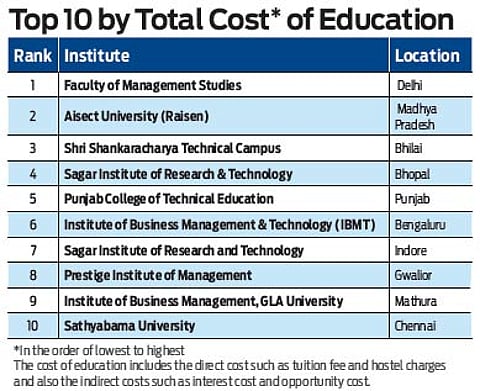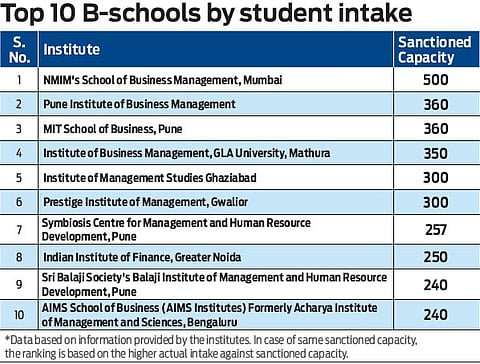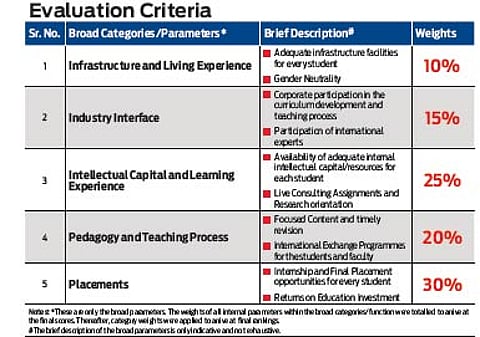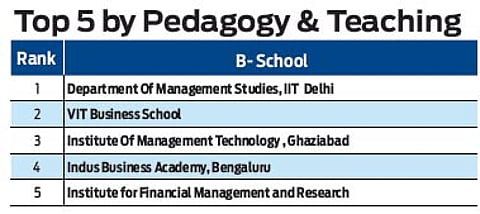Accept it; there are just too many B-schools in India. According to an ASSOCHAM report, there are over 5,500 B-schools in the country! The same logic may be applied to this ranking issue too as you sift through the pages. Most rankings emphasise on pedagogy, infrastructure and productivity, with little focus on placements and return on education investment—a parameter which can very clearly indicate the worth of one’s time and money spent studying. Further, most scores tend to be absolute and not percentile scores, which, in comparison, reveal a lot more. The inaugural Outlook Money Best B-school ranking attempts to make it easy for prospective candidates to meaningfully evaluate one school with another. The ranking is based on percentile scores, which reveal a lot more details. For instance, knowing someone scored 220 points does not reveal much. Firstly, you don’t know how many points were possible, and even if you did, you wouldn’t know how an individual school’s score compares to the peers. Instead, if you were told that a school scored a 90 percentile, you will know that it did as well or better than 90 per cent of the peers. We also explored ways to arrive at the return on education investment and years it would take to break-even the education cost for students, including the indirect costs like interest and opportunity costs.
Outlook Money rankings: Best B- schools
Outlook Money brings you the best B-School rankings 2016
In the following pages, you will come across institutes that fall in the super league, which is nothing but the list of the top 25 colleges from the HRD Ministry’s list. The reason to choose this list was more to present the top most colleges in the country. We of course have shared the details of the methodology we adopted, our own list of the top 25 besides a good mix of data that can help you gauge several other parameters that would help you choose the best B-school. At a time when B-schools are churning out more MBAs than ever before, even as employment stagnates, it is leaving a trail of highly qualified individuals who are unemployed. At the same time, cost of education is going up, even as mediocre students graduate from mediocre B-schools. We hope you are able to zero down on the B-school that has the necessary ingredients to help you chart a successful career in finance.
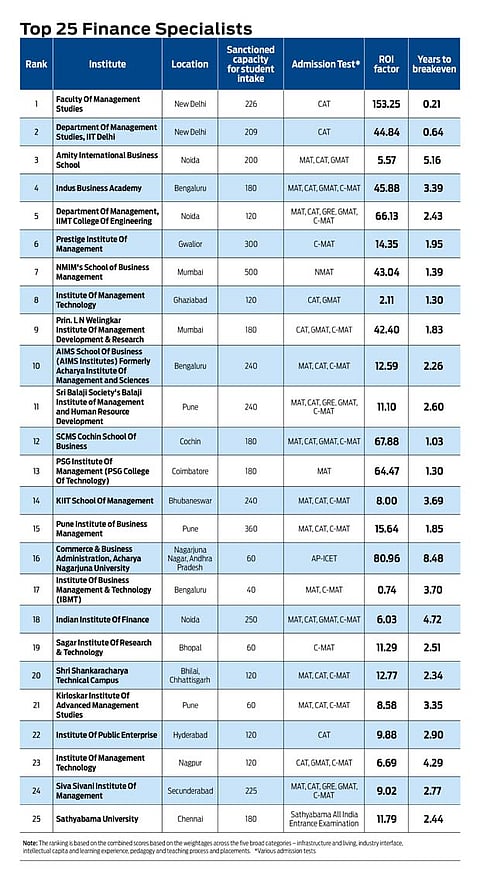
Years to break-even
This factor provides an important assessment point for evaluation of a B-school based on the time frame required to recoup the costs incurred by the student. To arrive at this figure, we included the total costs, including the interest cost, as well as opportunity costs and the yearly salary returns from placements.

Return on Investment
At a time when Return on Investment (ROI) is the buzzword in every aspect of life, it is fast-emerging as a key factor for assessment as students are increasingly looking to enroll in institutes that have a lower cost and lower timeframes for programme completion. For the calculation of ROI, we have accounted for the Median Salary as well as the Average Salary of placements from the institutes (to ensure that figures are not skewed) and the Total Cost incurred by the student including the Interest Costs and Opportunity Cost.

Top 5 women-friendly B-schools*
At a time when some of the biggest banks in India are run by women, it is natural to come across more girls pursuing an MBA in finances. The fact that girls get an additional 0.5 per cent discount on education loans, is to their benefit.
1. Symbiosis Centre for Management and Human Resource Development, Pune
2. Prestige Institute of Management, Gwalior
3. Apex Institute of Technology, Chandigarh University
4. Amity School of Insurance, Banking and Actuarial Science, Noida
5. Shri Shankaracharya Technical Campus, Bhilai, Chhattisgarh
*These B-schools have a higher female to male students intake ratio


